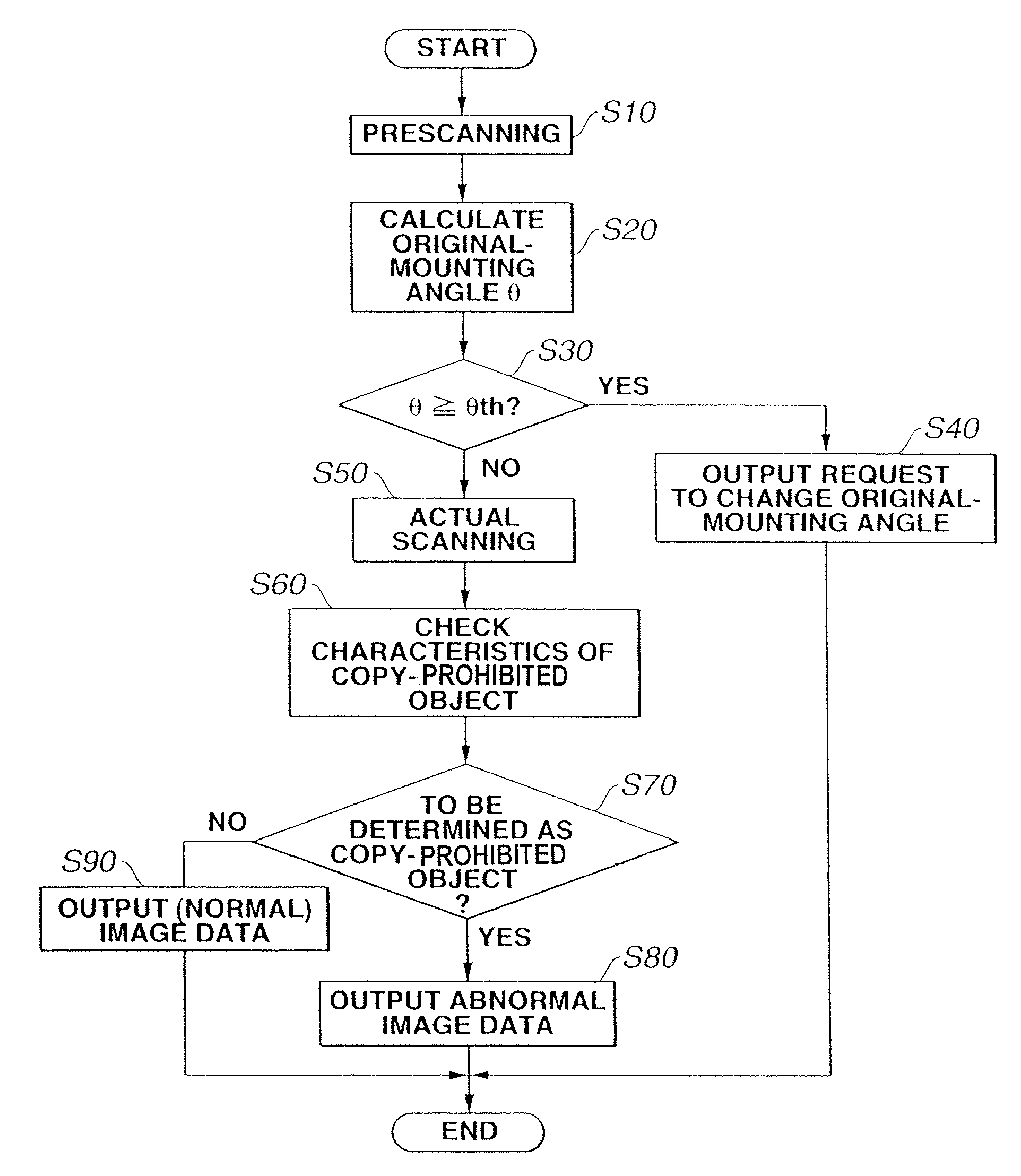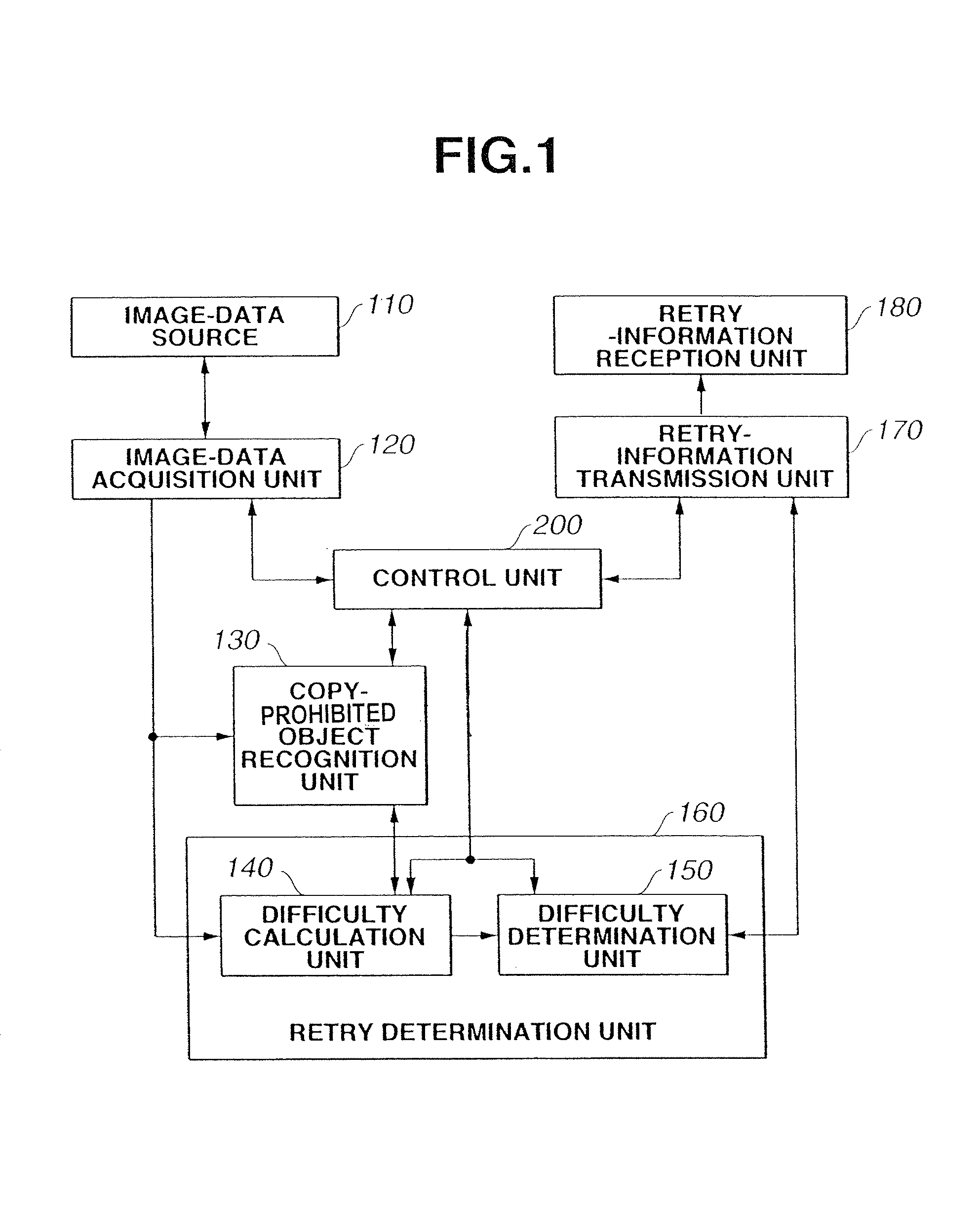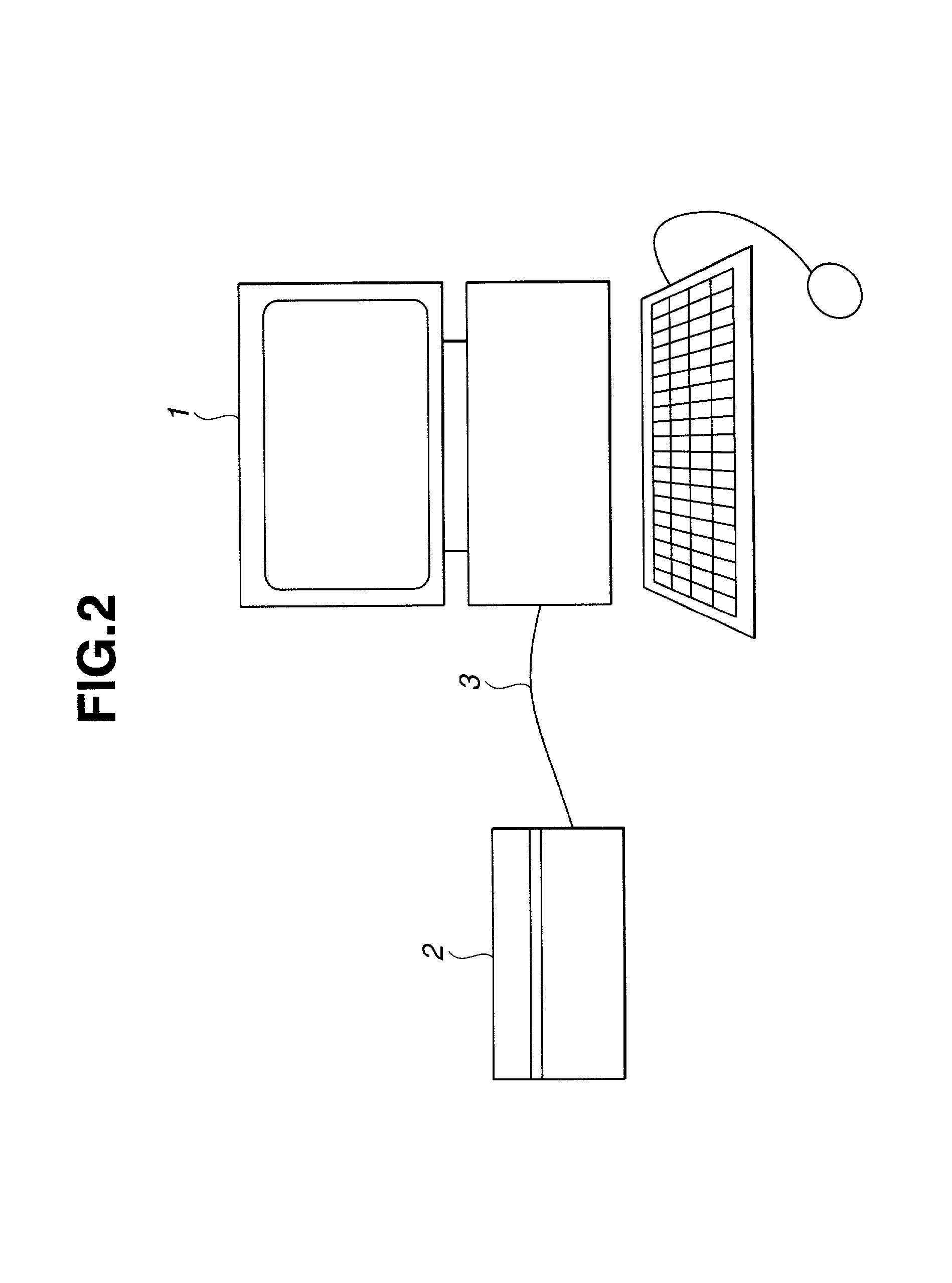Image processing apparatus effective for preventing counterfeiting of a copy-prohibition object
- Summary
- Abstract
- Description
- Claims
- Application Information
AI Technical Summary
Benefits of technology
Problems solved by technology
Method used
Image
Examples
second embodiment
[0058]Although in the above-described first embodiment, the check of the characteristics of a copy-prohibited object in step S60 is performed by extracting the characteristics from image data obtained by performing photoelectric scanning of the original, serving as a printed matter including copy-prohibited-object information using the digital-watermark technique, any other appropriate approach may also be adopted. The check of the characteristics of a copy-prohibited object in step S60 may be performed by comparing a color-spectrum distribution of image data obtained by scanning the original with data registered in advance in the ROM 13, based on each pixel value (a set of R, G and B values corresponding to three-color signals) in the image data, or comparing the synthetic image pattern of a part or the entirety of the original with pattern data registered in advance in a ROM or the like. In this case, in step S70, the evaluation value (the sum of the absolute values of difference ...
third embodiment
[0059]In the above-described first and second embodiments, the calculation of the mounting angle θ of the original (calculation of the difficulty in extraction of copy-prohibited-object information) is performed in steps S20 and S30, and a determination of whether or not extraction of copy-prohibited-object information is difficult (determination of difficulty) is performed from the obtained angle. However, any other appropriate approach may be adopted. The process of obtaining the mounting angle of the original in step S20 may be replaced by processing of obtaining the positions of the four corners of the original in the digital image obtained by reading the original on the original-mount (platen) and calculating the mounting position of the original (the coordinates of the four corners of the original) as shown in step S21 of FIG. 5, and the process of step S30 in FIG. 4 may be replaced by a determination of whether or not the mounting position of the original coincides with a pre...
fourth embodiment
[0062]Although in the above-described first through third embodiments, the calculation of difficulty in determination whether or not an image is a copy-prohibited object shown in step S20 or S21 is performed from an image obtained by pre-scanning shown in step S10, the present invention is not limited to such an approach. That is, actual scanning performed in step S50 may be performed in step S10. The image read in this actual scanning may be stored in the RAM 12 or the external storage device 18, and the stored image may be processed at the processing starting from step S60.
[0063]In this case, although it is necessary to provide storage means having a capacity sufficient enough to store the entire scanned image within the apparatus, it is possible to shorten the time required for pre-scanning.
PUM
 Login to View More
Login to View More Abstract
Description
Claims
Application Information
 Login to View More
Login to View More - R&D
- Intellectual Property
- Life Sciences
- Materials
- Tech Scout
- Unparalleled Data Quality
- Higher Quality Content
- 60% Fewer Hallucinations
Browse by: Latest US Patents, China's latest patents, Technical Efficacy Thesaurus, Application Domain, Technology Topic, Popular Technical Reports.
© 2025 PatSnap. All rights reserved.Legal|Privacy policy|Modern Slavery Act Transparency Statement|Sitemap|About US| Contact US: help@patsnap.com



